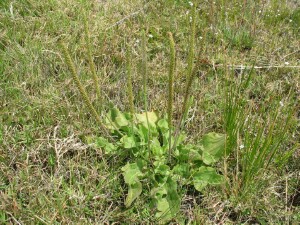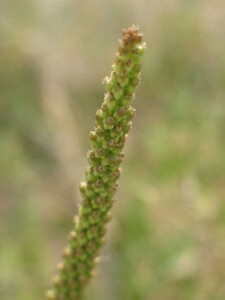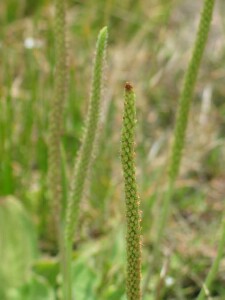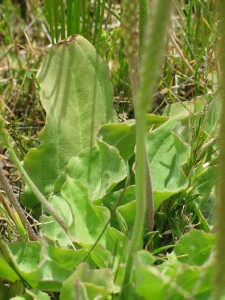Greater Plantain
Back | Salinity Indicator Plants Home | Common name home | Scientific name home | Photo Gallery | Glossary
| Greater Plantain photos | Family name: Plantain (Plantaginaceae) |
| Scientific Name: | Plantago major |  Greater Plaintain plant Photo: A J Brown |
Other Common Name: | Large Plantain | |
Status: | Native of Europe and Central Asia. Naturalised to many parts of the world, including Australia. | |
Plant Description: | A perennial herb with a short, stout taproot. The leaves are arranged in a basal rosetteand vitually hairless and smooth or occasionally with a few scattered hairs. The stalked leaves are broad, ovate to elliptic in shape, 4-20 cm long and 20-100 mm wide with five to nine conspicuous longitudinal veins and a few small, blunt, marginal teeth. Flower stalks (scapes) are up to 40 cm high. Flower-heads are cylindrical spikes, 8-25 cm long. Fruit is a capsule 4-6 mm long. | |
Habitat: | A weed of wet places, such as creek banks, roadside depressions and drainage lines. Generally indicative of freshwater environments, though it may tolerate brackish waters for short periods. Has good waterlogging tolerance. | |
Comments: | There are about 20 species of Plantain found in Victoria, including both Australian native and introduced exotics, such as Ribwort (Plantago lanceolata). Of these, only Buck’s-horn Plantain (Plantago coronopus) appears to tolerate saline conditions. | |
 Flowers of Greater Plantain Photo: A J Brown |  Greater Plantain flowerspike Photo: A J Brown |
 Leaves of Greater Plantain Photo: A J Brown |


